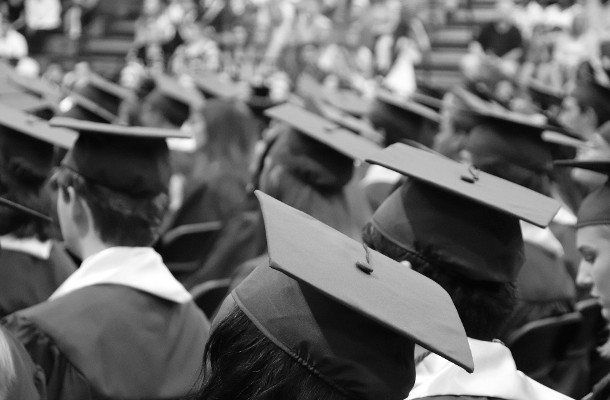
Sketching the Shape of Today’s Ad School

Two weeks ago in Cannes, Stockholm-based Berghs School of Communication was named Future Lions School of the Year as part of the AKQA-run celebration of young, tech-driven creativity. The title is given to whichever school receives the most shortlisted finalists. This is the fifth year in a row that Berghs has won this recognition.
At a time when many are questioning the barriers to entry to the creative industries that prevent them from getting the diverse intake they need to survive, LBB’s Alex Reeves caught up with Christopher Waldekrantz, creative director and marketing director for Berghs School of Communication to find out what he thinks an ad school should do in 2018.
LBB> What do you think is the key to your success in the Future Lions?
CW> I would have to say a combination of a few things. First of all, our school isn’t as big as most of the other communication schools around the world. We only have about 150 full time students at any given time. This gives us the opportunity to really get to know them, and to coach them individually onto their own creative path. Also, they question everything! By doing that, they get to the core of the actual problem and solve that, instead of only the symptoms. In essence really redefining what advertising and communication is.
Another important factor is our teachers. Unlike other schools, we do not have any employed teachers. The people lecturing are people in the industry. We have a huge network of alumni, teacher and tutors and they help our students through live briefs, mock briefs and pitches.
Last but not least: our way of teaching. Our method, action based learning, really forces the students to try, fail, try again and fail again until they crack the code. We have about three to four presentations a week per class so there is plenty of room for mistakes and learning. On top of that we house nine different disciplines, everything from design to growth marketing, copywriting to PR and we work interdisciplinary, meaning if you study to become a creative, you will have classes together with future strategists and producers. We believe this is the only way to teach as it makes our students plug-and-play ready. That is shown on our job ratio which is over 90% after three months of graduating.
LBB> What do you look for in a potential student?
CW> We look for curious people who understand the difference between information and communication. People who value collaboration over the idea of a lonesome genius. And we look for people who understand the responsibility of working with communication. To us, inclusion, diversity and responsibility is key to make great work.
LBB> What is the school's philosophy on how to teach creativity?
CW> We know that creativity isn’t reserved for a few people. It is rather a part of being human. The key to nourish creativity is to encourage the individual to learn more than just the craft. To be curious, to ask the question ‘why’ more times than what feels comfortable. And to really understand that a strategic mindset is the very base on which big, bold and crazy ideas can live without being discarded as merely storytelling.
That’s why we mix up the teams, so that they gain a greater understanding of the different parts of communication and how to make it meaningful.
LBB> You say one of Berghs’ most important missions is to include more perspectives from teachers as well as from students. Why is that so important and how do you do it?
CW> Because in reality, communication is very different today compared to just a few years ago. ‘Inclusion’ as a term within the industry is almost seen as a buzzword when it’s more about realising what the world looks like.
The idea of what's aspirational has changed. Now, reality is and truthful examples have more traction than the perfect life. And if one aspires to be truthful, you need more perspectives, ideas from different minds and teams with a multitude of different experiences, regardless if it’s about culture, ethnicity, sexual orientation and so on.
LBB> There's an argument that suggests advertising schools shouldn't be the only place agencies look for talent, as the industry needs to take in as broad and diverse an intake as possible. What are your thoughts on that debate?
CW> I think talent could come from anywhere. As the communications landscape changes, what we consider talent might be different in just a few years. But, talent alone isn’t enough, you have to be able to put that talent to work and that takes practice. I think the real question isn’t about going to an advertising school or not, it’s about making this kind of education available for more people with different backgrounds. That would solve a lot of issues. Because to say that a creative doesn’t need proper training is to discard the profession.
Agencies looking for unpolished talent have a lot to gain in terms of shaping this individual, but that takes time, and time is money.
LBB> Finally, what do you think are the biggest challenges young people face starting careers in advertising today?
CW> I think young people wanting to get into the industry have a better chance at being successful, now more than ever. I would say that it’s the senior professionals who are facing a challenge.The digitalised world requires a faster, more agile approach and our students show that that is something that comes naturally to them, much more so than people from previous generations. All they have to do is understand business and collaboration. Once they do that, they will be unstoppable.













